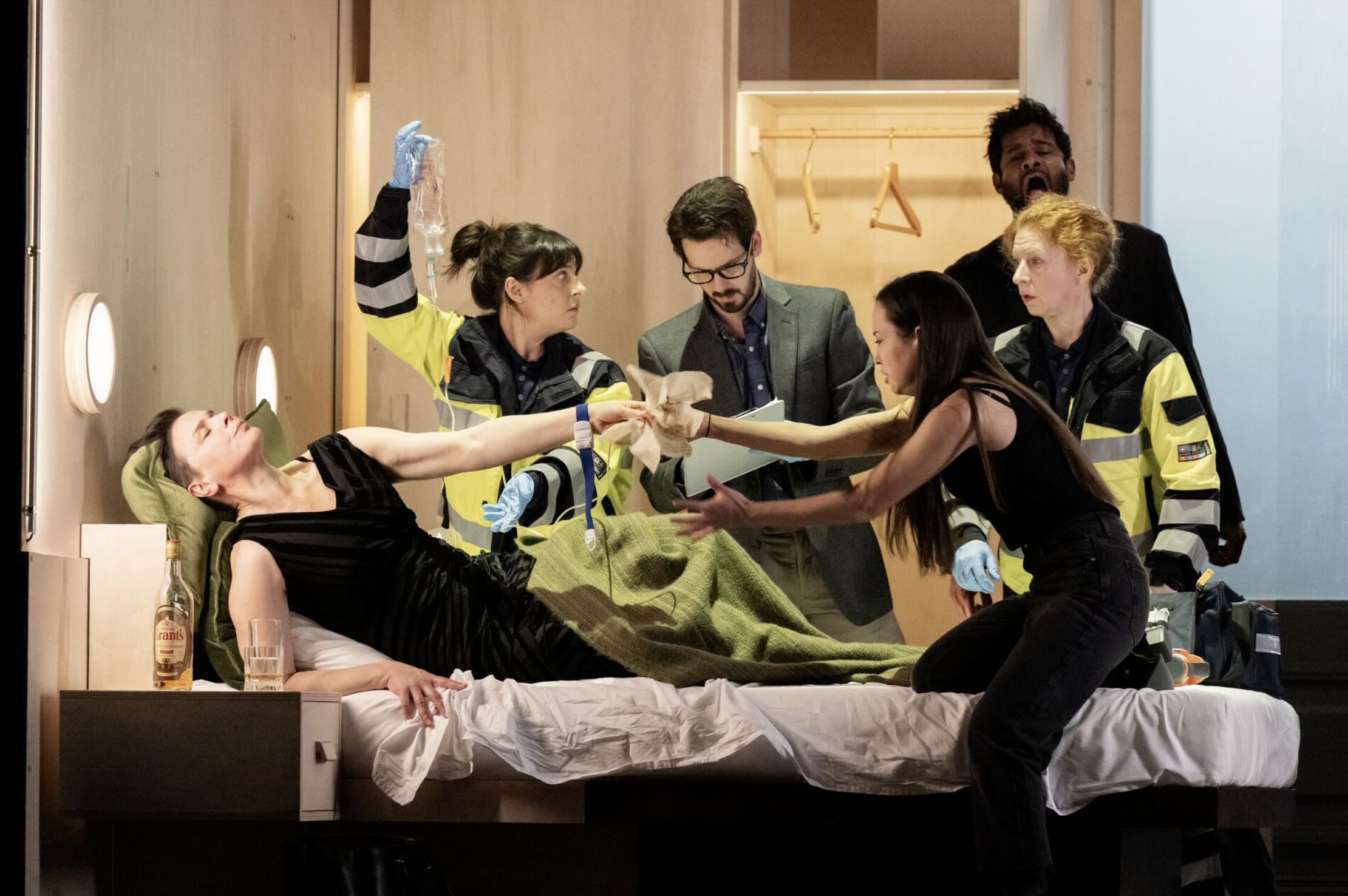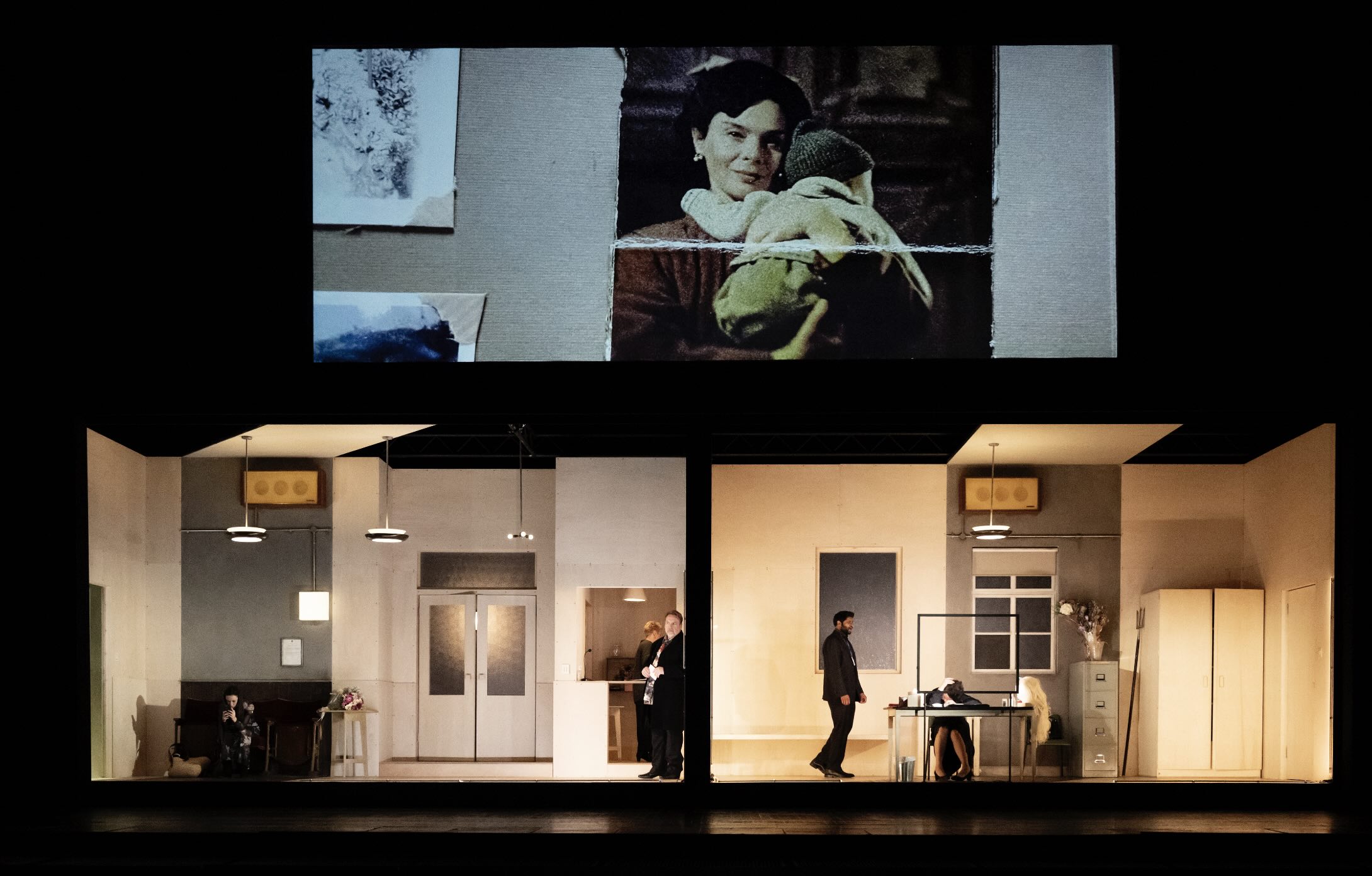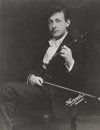Reviews
Interventionist Makropulos Booed
LONDON—Katie Mitchell is known for her frequently revelatory radical Feminist revisions of the operatic canon, but in the case of Janácek’s The Makropulos Case she has staged an all-out intervention. Last week, the British director announced she was ending an almost three-decade-long operatic career, tired of the artform’s sexism and misogyny. By presenting an entirely invented subplot alongside Karel Capek’s original storyline, she has clearly decided to go out with a bang. The production, which opened at the Royal Opera House November 4, was vociferously booed on opening night. Unfair. Yet for all her craft and prodigious powers of insight, Mitchell’s two-for-the-price-of-one staging is littered with problems.

Ausrine Stundyte as Marty, the onetime grand dame now emotionally drained and supine
The opera, which premiered in 1922, features a woman who has lived for 300 years and, at first, appears desperate to notch up some more. Emilia Marty, a famous opera singer, was born in 1585 as Elina Makropulos, the daughter of an alchemist who tested an elixir of life on his own child. Over the centuries, the girl became a woman, reinventing herself, usually as a theatrical performer, and invariably with the initial E.M. A series of often-abusive relationships and abandoned children, however, have left her cold and cynical. The opera revolves around a centuries-old, contested legacy left to one of Marty’s offspring, born when she was going by the name of Ellian MacGregor. By leading the lawyers to a long-lost will, she hopes to get her hands on her father’s formula. It’s complicated, but so far, so good.
To this story, Mitchell adds another. Krista, the daughter of one of the lawyers, and her boyfriend Janek, the son of one of the claimants, have decided to practice a sting on Marty in order to steal her treasures. Marty, scarred by her experiences with men and preferring the physical company of women, meets Krista on a hook-up app and the two have sex in her hotel room. Later, however, Krista genuinely falls for Marty. When Janek attempts to intervene, Krista shoots him dead and the two women make it look like a suicide. When Marty, disillusioned with life, finally dies, she bequeaths the formula to Krista. It’s this clandestine relationship, in Mitchell’s eyes, that explains why in the original storyline a famous opera singer decides to pass on the secret of eternal life to a woman she otherwise has barely met. Also so far, so good.
The problem here is two complex narratives that run simultaneously, the first played out on stage and the other explained through a busy series of texts, video calls, and emojis projected just below the surtitles (words here are courtesy of playwright Lucy Wadham). If you know the original plot inside out, you might have a chance of following both stories. Otherwise, you are likely to emerge utterly flummoxed. Whereas in her previous revisionist productions—Handel’s Theodora, or Donizetti’s Lucia di Lammermoor—slow-moving plots enabled audiences breathing space to take on board a substantial additional concept, here it simply doesn’t work.
Mitchell often compounds the problem by having crucial information imparted stage right while something utterly distracting is going on stage left. The lawyer Vítek explains the intricate backstory in the hotel lobby, for example, just as Krista and Marty are engaged in a torrid romp in the bedroom. As Marty lies dying, her great-great-grandson Gregor is taking a pee in the bathroom. The need to simultaneously maintain two or three different spaces make Vicki Mortimer’s scrupulously observed sets feel intensely cramped.

A cramped, busy set for a cramped, busy staging; text messages also appeared in the space with the photo
Despite all that, there is some illuminating character work and plenty of wry humor: “wtf,” texts Krista, sharing the contents of a faded box. “Vibrator.” “Victorian,” replies Janek, apparently an expert on antique sex toys. There is plenty to disturb too. Marty shoots up before her encounter with Krista, there is a brutal sex scene later on when she submits in exchange for the return of the formula, and Gregor’s infatuation is clearly rooted in violent sexual fantasies. The photos of Marty in various incarnations holding a baby or a small child are a poignant reminder of what she suffered over the years.
Musically there was much to like. In only his second production as the Royal Opera’s music director, Jakub Hruša brought dramatic drive and considerable clarity to Janácek’s multihued score, from the brilliantly theatrical overture with Byzantine brass fanfares played from a box stage right to the aching final scene where Marty finds some kind of release.
Ausrine Stundyte’s Marty was a highly original take on the usual mysterious diva. Clad in basic black and emotionally drained, here was a woman who had given up playing the grande dame centuries ago, taking what she needed with a detached efficiency born of experience. Vocally she had a lot to offer, though the wide-ranging lines took a significant toll on diction.
As Krista, Heather Engebretson charted the path from petty thief to distraught lover nicely, her soprano crystal clear on the few occasions she got to use it (on paper, the role is tiny). Sean Panikkar’s Gregor was emotionally ambiguous, his tenor warm and free ranging. Johan Reuter as Baron Prus and Henry Waddington as Dr. Kolenatý built convincing characters, though both occasionally got lost in the orchestral melee. Peter Hoare’s sharply observed Vítek was a textbook example of how to cut through an orchestration, Daniel Matoušek displayed a lovely lyrical tenor as Janek, and Alan Oke turned in an affectionate cameo as the befuddled Hauk-Šendorf.
Surprisingly, this is the first time the Royal Ballet and Opera has staged The Makropulos Case. It’s a pity that audiences won’t get to discover its theatrical originality and profound emotional depths as the composer might have wished. It’s unlikely, however, that anyone will be bored.
Photos: Camilla Greenwell, the Royal Opera





 FEATURED JOBS
FEATURED JOBS

 RENT A PHOTO
RENT A PHOTO


